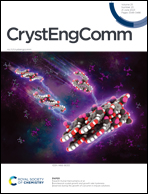Enhanced photocatalytic activity of Ag2S particle decorated S-doped WO3 nanorods synthesized through two-stage vaporous vulcanization processes†
Abstract
Ag2S decorated S-doped WO3 nanorods were synthesized through two-stage vapor vulcanization processes with vaporous S used as a vulcanization precursor. The initially sputtered Ag particles on the S-doped WO3 nanorods fully transformed into Ag2S particles after vapor vulcanization at 350 °C. The microstructures of Ag2S/S-doped WO3 composite nanorods and the content of initially sputtered decorated Ag particles on the nanorods affect the spectral absorption and photogenerated charge separation ability of Ag2S/S-doped WO3 composite nanorods. The composite nanorods obtained by modification of the surface with an Ag content of 0.79 at% show the highest photocurrent density, the lowest interface resistance, and the highest photodegradation ability toward methyl orange dyes. The scavenger experiment and the possible Z-type carrier movement mechanism show that superoxide radicals and hydroxyl radicals are the main active substances for the photodegradation of methyl orange dyes by Ag2S/S-doped WO3 composite nanorods. The results show that the photosensitivity can be effectively adjusted on the surface of the S-doped WO3 nanorod template with appropriate decoration content of Ag2S particles, which is expected to be promising in photocatalyst applications.

- This article is part of the themed collection: Editor’s Collection: Advances in nanocrystal heterojunctions


 Please wait while we load your content...
Please wait while we load your content...